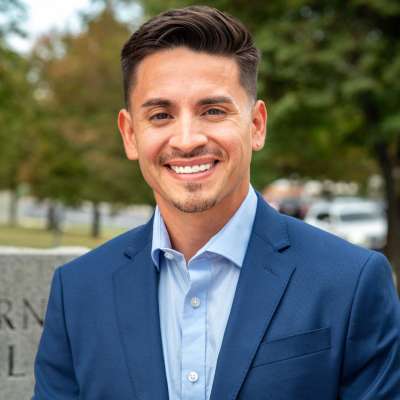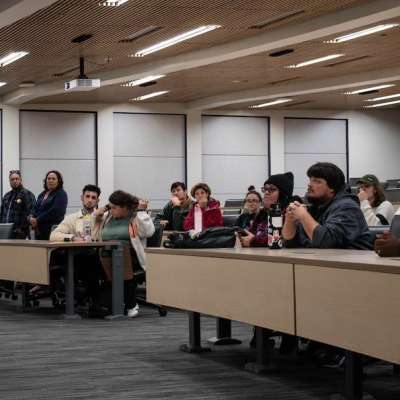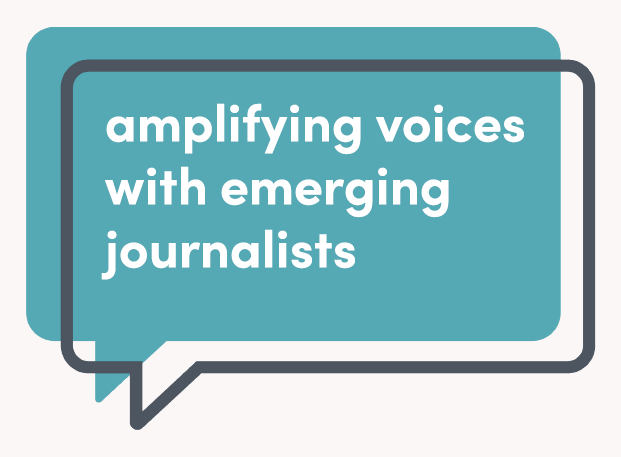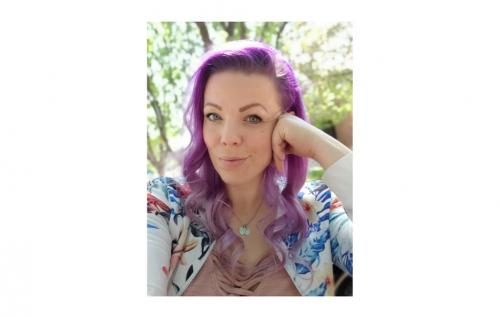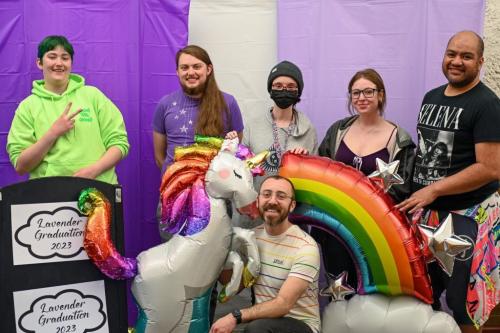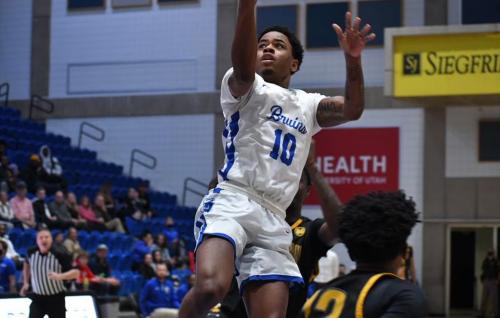Since 2021, Salt Lake Community College’s Queer Student Association and the Gender and Sexuality Student Resource Center have worked together to host a Lavender Graduation for queer graduates — until this year.
The Lavender Graduation ceremony takes place on numerous college campuses each year to honor LGBTQ+ students and allies. However, when the GSSRC started promoting its event, they were told to stop.
Lavender Graduation cancellation
Peter Moosman, the GSSRC coordinator, shared some of the reasons and frustrations that led to the cancellation.
“HB 261 happened. HB 261 banned exclusive things. [The bill] even mentioned graduation celebrations, you know, really targeting,” Moosman said. “So, with the Gender and Sexuality Student Resource Center pivoting … from an LGBT resource center [and] a women’s resource center … to a resource center for all students through the lens of gender and sexuality, we figured we could pivot our [Lavender Graduation] to a GSSRC grad, and that would satisfy HB 261, allowing us to still host our event.”
HB 261, the “Equal Opportunity Initiatives” bill sponsored by Rep. Katy Hall, R-South Ogden, “prohibits an institution of higher education, the public education system, and a government employer from taking certain actions in engaging in discriminatory practices.”
Moosman said the “Dear Colleague Letter” — a letter from the Department of Education and the presidential administration for education — states that any event, program, or resource exclusively catering to a specific race is deemed discriminatory and prohibited by law. Moosman argued that because the letter specifically discussed race, it shouldn’t have applied to the GSSRC.
The center mentioned that the Division of Student Affairs streamlined all small graduation celebrations but thought that the GSSRC would be justified in moving forward with their Lavender Graduation, since it differed from the DOSA event on May 2.
“[Lavender Graduation] was more intimate and connective, and we still felt that part of this national tradition. Part of the GSSRC’s tradition was holding this [event], and so we wanted to continue to do that,” said Moosman.
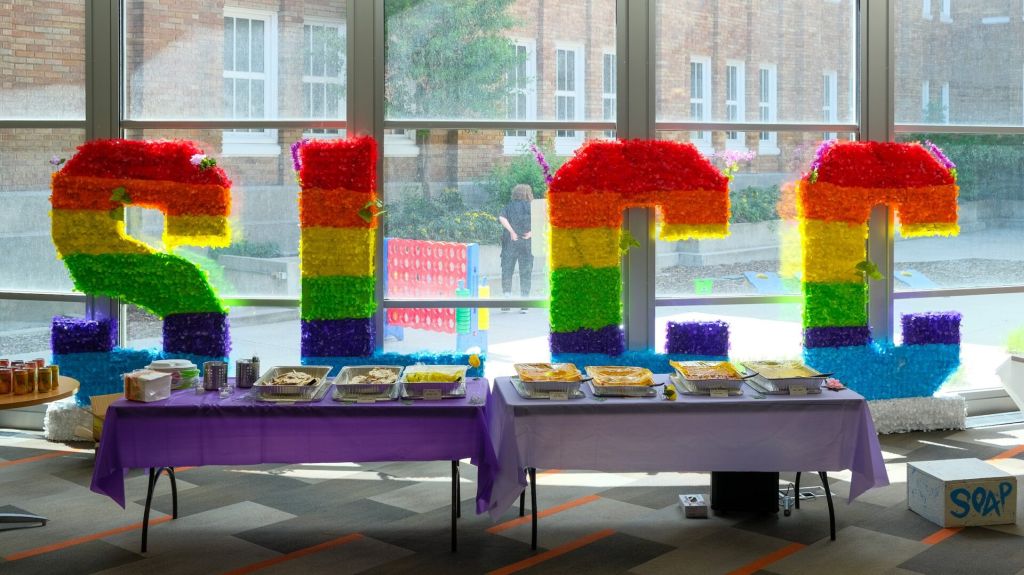
The last SLCC Lavender Graduation was held on April 24, 2024, in the Student Forum on the South City Campus. Food was provided and games were held in the courtyard. Recent legislation caused the cancellation of the ceremony for 2025. (Michael Nelson)
Kathie Campbell, the associate vice president for Student Success at SLCC, said that due to restrictions, the college wanted to pool resources and hold a combined celebration that involved all clubs.
“We really felt compelled, based on the law, to say, ‘Now we really need to get everybody under this umbrella,’” said Campbell.
Marjorie Wilson, co-president of QSA and a biology major, said that the celebrations can still be held without them being identity-based.
“There is the further complication that HB 261 will mean that the school can’t be spending money on identity-based graduation ceremonies,” said Wilson. “I think celebrations should be fine.”
Wilson wanted to adapt the language of the ceremony name to keep the graduation. The Lavender Graduation was going to be renamed to the GSSRC graduation to comply with the bill.
“We thought about how we make changes to language we use in a way that can … just provide clarity for people who are curious, and not as informed, and looking in from the outside — that this is a center that truly is, and always has been, welcoming to all students. It’s for everyone. Everyone has a gender. Everyone has a sexuality,” said Wilson.
Kai Lyon, co-president of QSA and an environmental science major, believes Lavender Graduations are part of a larger context regarding queer history.
“I think it’s really important as a historical celebration — teaching people about this type of [circumstance], and how we have been oppressed in the past, and how we need to remember ways that we can show each other support without necessarily breaking the rules,” shared Lyon. “That’s really what angers me, because it feels really like they’re saying, ‘even though you’re not breaking the rules, you can’t do that.’”
Discontent with communication
Wilson felt the sudden cancellation added unnecessary stress to students.
“It’s up to students to say, ‘Hey, wait, like, whoa, hold the reins. Let’s talk about this. Let’s see if this is necessary. Let’s see if this makes sense. Let’s see if this is supporting students,’” said Wilson.
Though everyone is adapting to the changes that bills and regulations have placed on higher education, the disconnect in communication has left students frustrated. Wilson argued for a communication model where students are involved sooner, before discussions happen and to gather feedback.
Campbell said the immediate response required from colleges regarding the new laws caused some disconnect with the messaging to the student leaders.
“We should have at least said, ‘Hey, this also impacts this.’ It should have [happened], right? We’re here for students. That’s why we do what we do,” said Campbell. “Our intent never was to cancel anything. We never want to cancel celebrating student success.”
Lyon expressed frustration over the disconnect.
“People above make these decisions without ever asking … and expecting us to put in the work to fix it,” said Lyon. “I just feel like the communication is often too little, too late.”
Why smaller graduations matter to students
In an Instagram post, the QSA shared how SLCC’s Student Affairs canceled smaller graduations in favor of a single “combined” celebration, which doesn’t allow for personal plans and aspects that smaller celebrations can.
The QSA started a student-led email campaign to petition for the allowance of smaller cohort graduations. The club also opened a survey to hear from fellow students about the issue, letting students submit responses anonymously.
Wilson said some of the survey responses have already shown that smaller graduations motivate students to finish school.
“I am already hearing from students that these ceremonies help them to stay in school and help them to even conceptualize that they can really do college and be a graduate, but also to find the cohort of people that they interact with regularly,” said Wilson. “And being able to look forward to that small acknowledgement.”
According to some of the survey responses, smaller graduations are beneficial to students who may not want to come out to their families at a large public gathering.
“Students want their family to be able to come to like, the major graduation, but they want to be celebrated more openly with friends on a smaller basis,” said Wilson.
GSSRC opts out of cultural graduation event
To protest HB 261, Fernando Rodriguez Camarena, president of the Native Indigenous Student Union, joined with other clubs to hold the "We Write Our Own Stories" graduation event in April.
“Normally, we would do separate events — but because of lack of money, lack of people helping us and with [the presidential] administration currently right now, making students feel unwelcome [...] because of the immigration laws that are starting to happen. A lot of us feel down,” he said.
Camarena said the goal of the collaboration was to support one another and create a community among the clubs. After learning the GSSRC wouldn't have its own celebration, he invited them to join the combined event.
“When I heard that Lavender wasn't happening or they're not sure it's going to happen, I didn't want to leave our queer students alone,” said Camarena.
While the "We Write Our Own Stories" event was initially intended for cultural groups, he invited all identity-based clubs, emphasizing the connection between queerness and culture.
“It's not just being queer — your culture, your history and just your background and your family all have something to do with it. Finding queerness is your own thing. But being queer often intermixes with other sources,” said Camarena.
Although the GSSRC supports the NISU, they declined to participate in the cultural celebration, feeling it did not encompass their goal of reinstating the Lavender Graduation.
Pearl Ashton wrote this story as a student of Salt Lake Community College.








